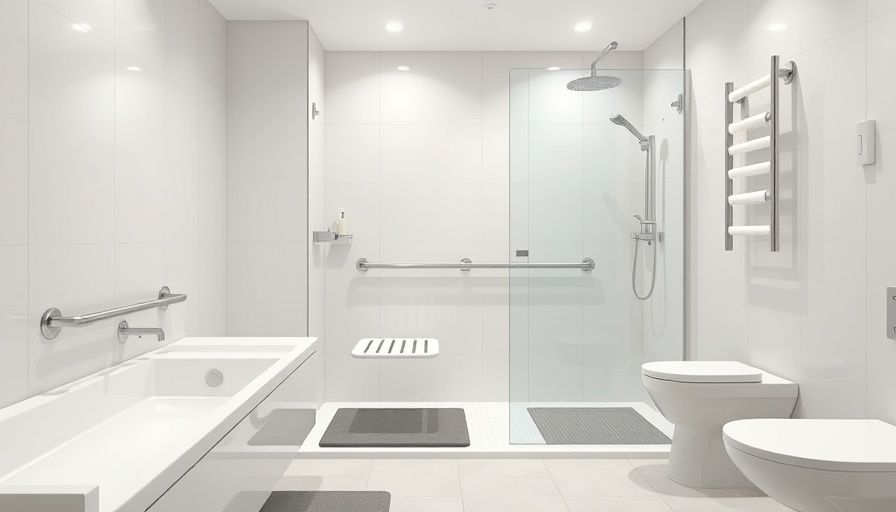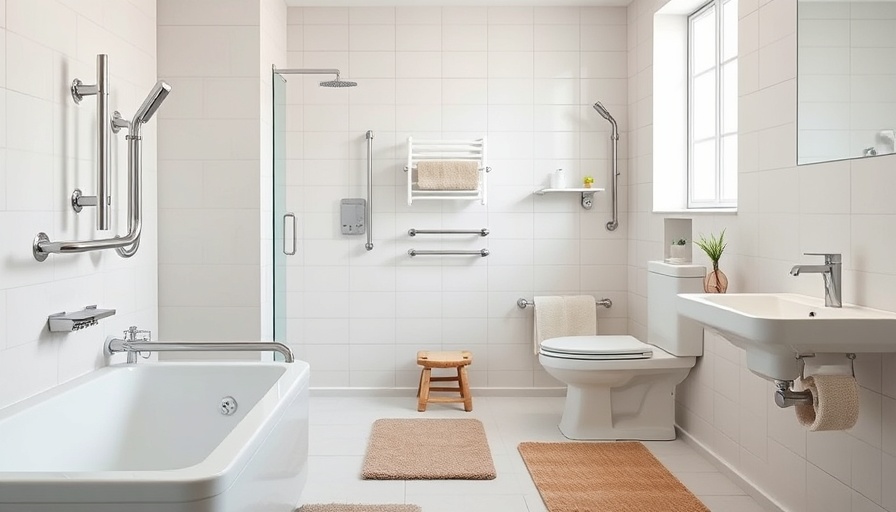
Understanding the Importance of Walk-In Showers for Seniors
As the population ages, safety becomes paramount, particularly in daily routines such as bathing. For many seniors, traditional bathtubs can pose significant challenges, leading to an increased risk of falls and injuries. Enter walk-in showers—specifically designed to provide safe and accessible bathing experiences. By eliminating high thresholds and often incorporating user-friendly features, these showers can greatly enhance independence and confidence for seniors and their caregivers alike.
Unpacking Walk-In Shower Features and Their Benefits
Walk-in showers come equipped with various beneficial features that cater particularly to the needs of older adults. The absence of curbs—the raised edges that exist around standard tubs—significantly reduces tripping hazards, making access much easier. For example, many walk-in showers also boast slip-resistant flooring and spacious designs allowing for the use of mobility aids without restrictions.
Additionally, many of these showers can be customized with shower chairs, adjustable showerheads, and grab bars to ensure safety and comfort. It's important for caregivers to encourage seniors to leverage these design features to enhance their bathing experience while minimizing risks.
Safety Tips to Keep in Mind for Seniors in Walk-In Showers
Ensuring safety while using walk-in showers is crucial. Non-slip mats can effectively combat the risks associated with wet flooring, while anti-scald valves are invaluable in maintaining safe water temperatures. Furthermore, the strategic placement of grab bars at different heights allows seniors to receive adequate support while entering, exiting, or standing during their shower.
An often-overlooked safety aspect is lighting. A well-lit environment is essential in preventing accidents. Seniors typically benefit from bright, diffused lighting that erases shadows. Moreover, motion-sensor lights can be particularly beneficial for those who have difficulty reaching traditional switches.
Personalizing Walk-In Showers to Suit Individual Needs
Each senior will have unique mobility requirements, which is why customizing walk-in showers is vital. For instance, incorporating shower chairs can provide stability, allowing seniors a place to rest and a safeguard against fatigue or slips. Handheld showerheads are another excellent feature, facilitating mobility and allowing caregivers to assist with hard-to-reach areas, promoting a greater sense of independence.
It's also crucial to ensure that daily toiletries like shampoo and soap are easily accessible, potentially through wall-mounted dispensers that prevent bending and reduce slip risks.
Connecting With the Broader Community and Sharing Insights
As seniors navigate their options, sharing resources through caregiver networks can be enlightening. Many local communities offer support groups where caregivers can exchange personal experiences and effective safety measures regarding walk-in showers. By fostering these connections, both caregivers and seniors will likely feel more assured and competent in managing bathroom safety.
Future Trends in Bathroom Safety for Aging in Place
With technology advancing, the future of walk-in showers will likely embrace even more innovations aimed at improving safety and accessibility. Smart features, such as temperature control through mobile apps or voice-activated lighting, may become commonplace, providing even deeper levels of safety and comfort for seniors.
It's crucial for both seniors and caregivers to remain informed about evolving technologies and adapt their living spaces accordingly to enhance their quality of life.
Conclusion: Empowering Seniors with Knowledge
By understanding the features and safety considerations associated with walk-in showers, seniors and their caregivers can create safer bathing experiences. Utilizing resources and staying proactive in enhancing bathroom safety not only reduces risks but also promotes independence and well-being among older adults.
For more information and resources, join our community discussions and share insights that matter. Together, we can pave the way for safer and more accessible living environments.
 Add Row
Add Row  Add
Add 




 Add Row
Add Row  Add
Add 

Write A Comment